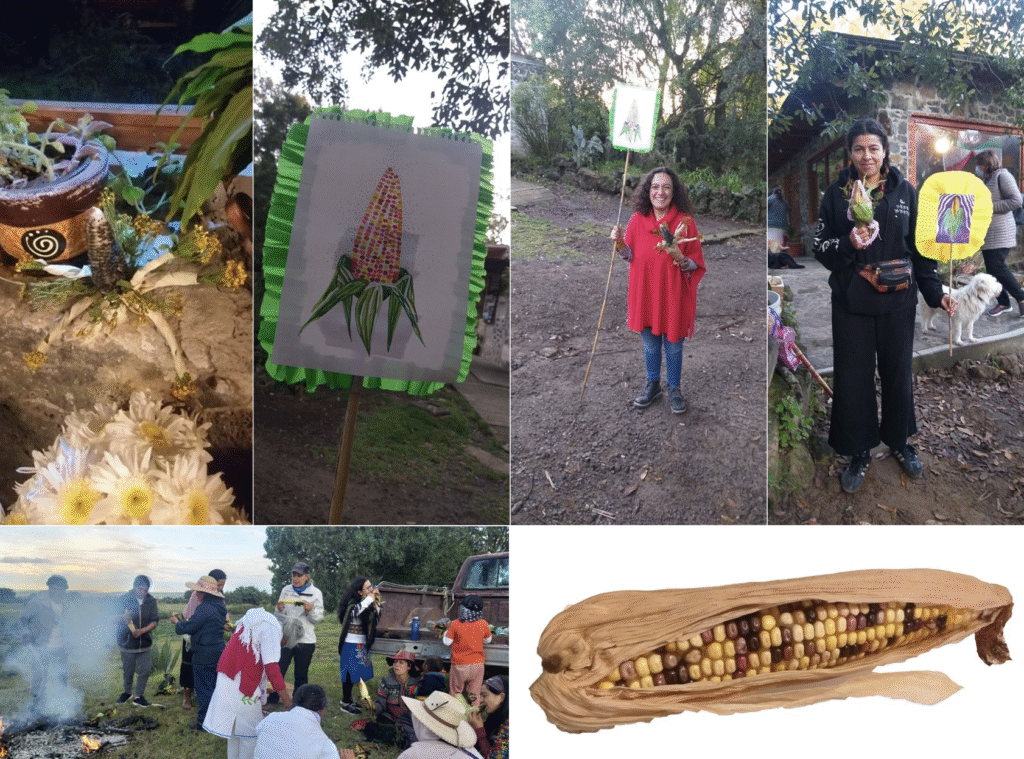
Category: 2022
-
Praying For Corn Ceremonies

Exposition name: Praying For Corn Ceremonies
-
PSYCHOTROPICAL COCKTAILS (PHARMAKON)
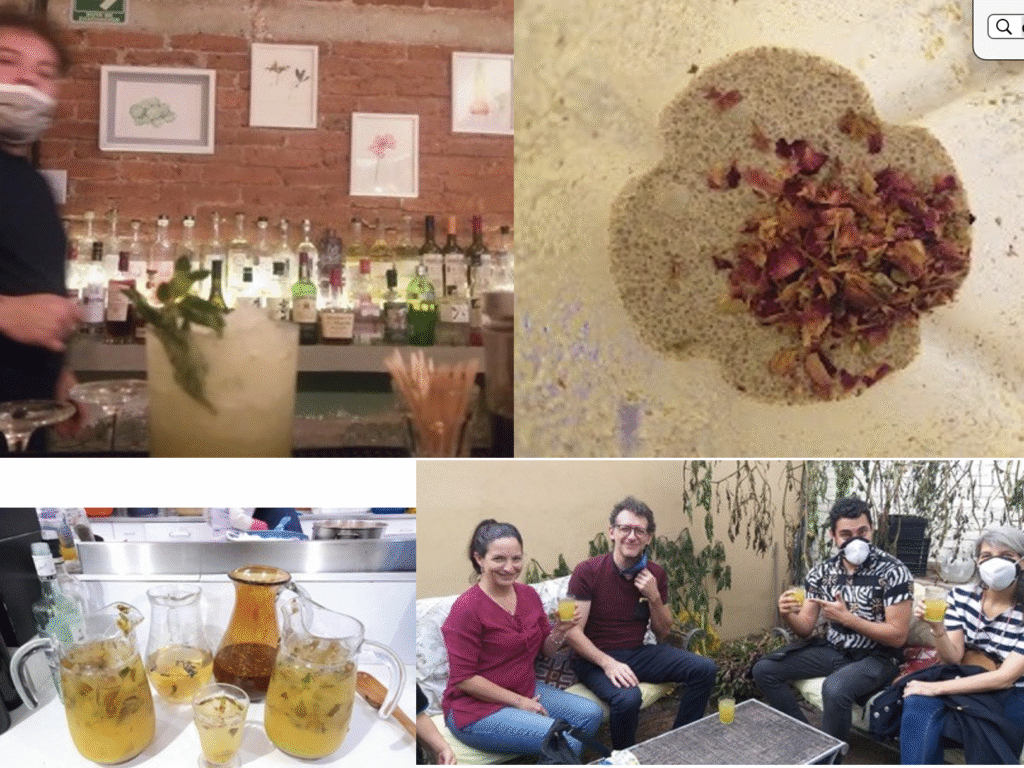
Exposition name: PHARMAKON: PSYCHOTROPICAL COCKTAILS
Location: Nina Menocal Gallery, Arafura’s Garden, IMSS Restaurant.
In collaboration with: Chef Ramses Manek
Date: 2021 – 2022
Description: The Psychotropical Cocktails project unfolded across several key venues in Mexico City throughout 2021, merging artistic experimentation with botanical rituals. At Arafura’s Garden in July, as part of a curatorial residency program, preparations began with cocktails and foods infused with psychotropical plants grown onsite. Later, in November, the project took form within the exhibition Nuevo Verdor at Nina Menocal Gallery, featuring signature drinks such as Cuba Libre (lulo and coca leaf with rum and soda), Blue Hummingbird – Huitzilopochtli (tequila with psilocybin mushrooms from San Isidro), and No Fear (pericón and mezcal with damiana and orange juice). Earlier in April, in collaboration with chef Ramses Manek, the experience also extended to a one-night event at IMSS Restaurant, where a curated menu of entheogenic recipes and psychotropical cocktails further explored the intersection of taste, plants, and expanded states of perception.
Cocktails Menu:
– Cuba libre: Lulo and coca leafs with Rum and soda.
– Blue hummingbird Huitzilopochtli: Tequila and Psilocibe Mushrooms, San isidro .
– No fear: Pericón and mezcal with damiana and orange juice. -
Apothecary and consultation performance
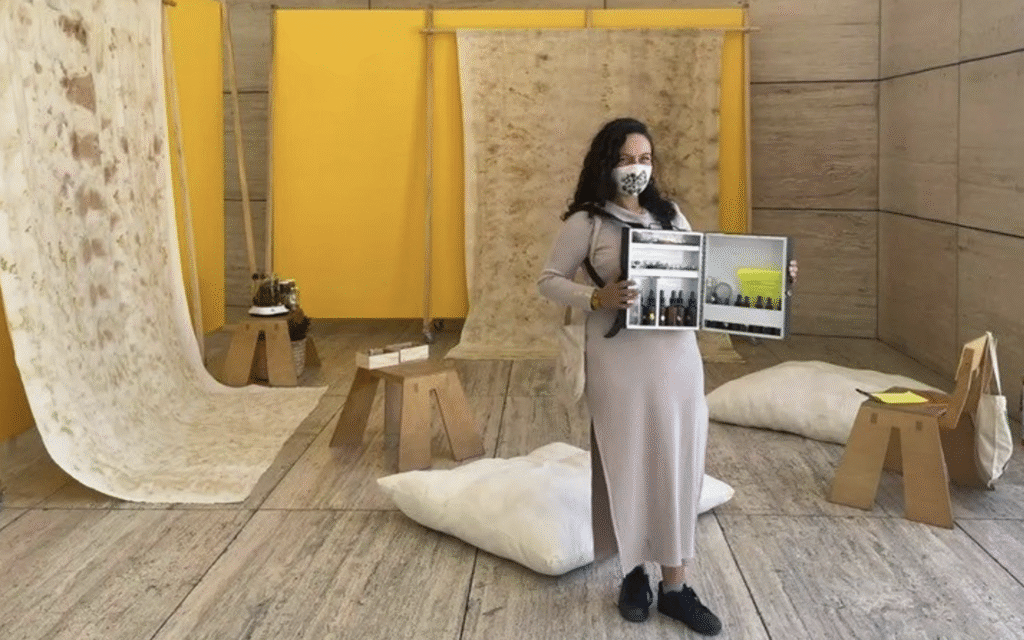
Exposition name: Apothecary and consultation performance
Location: Tamayo Museum, México City
Curator: Kit Hammonds
Date: 2022 -
Pharmakon: Earth Upside Down – Psicotropicalia Maya
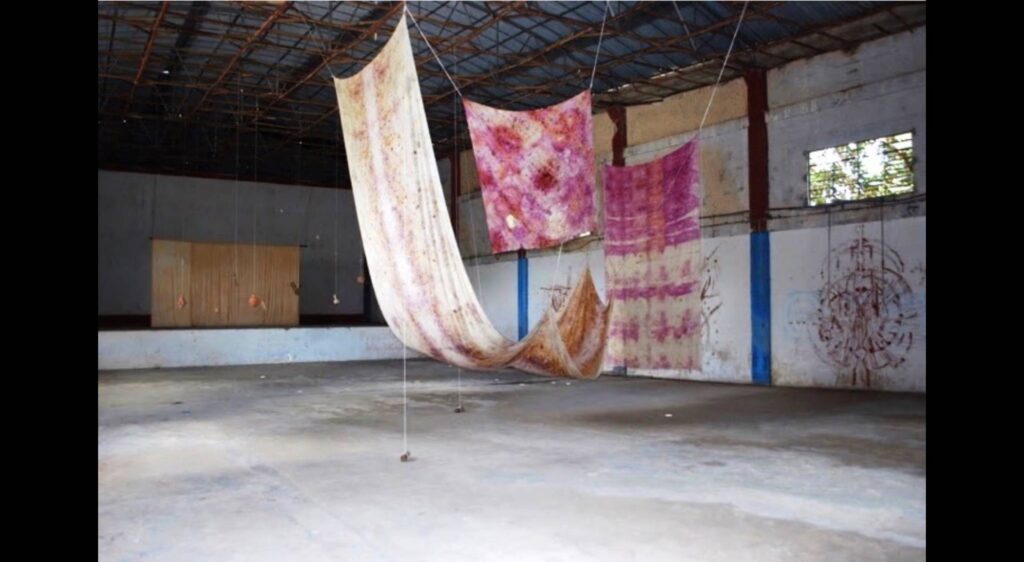
Exposition name: Pharmakon: Earth Upside Down – Psicotropicalia Maya
Location: Izamal, Yucatán. México
Institution: JUMEX Museum Extrawalls,
Curator: Kit Hammonds
Other artists: Lorena Ancona, Galia Eibenschutz & Erika Torres, Calixto Ramírez, Rafiki Sánchez.
Date: Abr 2022
Description: Cotton fabrics dyed in vapor with medicinal plants found in Izamal and Mérida Dragon’s blood, achiote, chaya, ricino, muicle, achiote, bugamvilia, Jamaica, tronadora, tobacco, chicalote, damiana, tepezcohuite. Nine meters by seven meters by three meters.
Related external articles:
– Proyecto en Izamal, La tierra al revés. By Fundación Jumex
https://www.fundacionjumex.org/es/exposiciones/242-proyecto-en-izamal-la-tierra-al-reves
Back to the Art Expositions List >> -
Comun Herbal Pot
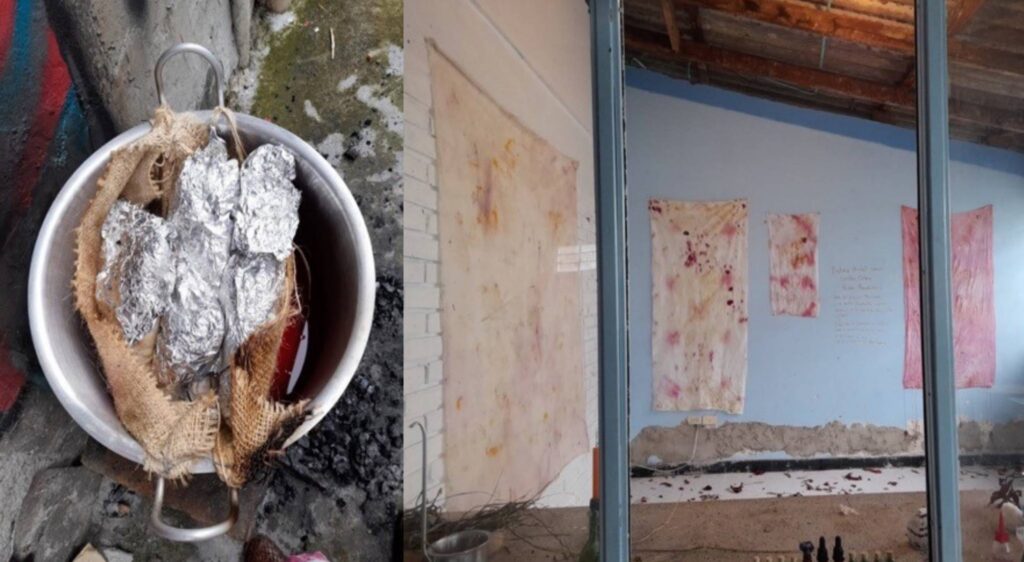
Exposition name: Comun Herbal Pot
Location: Pereira Museum, Colombia
Collaborations: Vivian Abenshushan, Hugo Tangarife and Oriana Cardona.
Date: Abr 2022
Description: We invited the assistants in a collective participatory action to cook together, to dye the fabrics with different kind of plants and vegetables. As a group production we shared, and cook the fabrics with the plants and enjoyed the smell and inhaled the vapors. The result was installed in the communal museum as an recovery space, where the smells of plants and fruits, took us in to our deepest emotions and memories.
Related external articles:
– Museo de Arte de Pereira, Colombia:
https://museu.ms/museum/details/16876/museo-de-arte-de-pereira
Back to the Art Expositions List >> -
Seeds Oracles
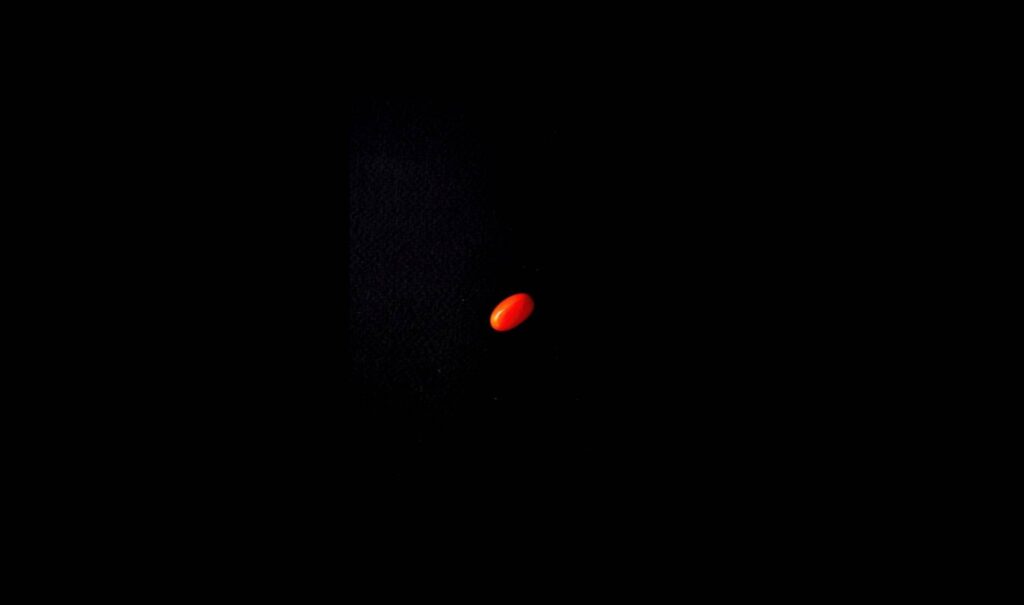
Exposition name: Seeds Oracle
Location: Tamayo Museum, México City
Date: 2022
Description: Cristina Ochoa presents an oracle crafted from corn and colorín seeds, drawing on ancient Mayan divination techniques and blending them with contemporary digital oracles commonly found online. Rather than simply displaying archival material or creating a new standalone piece, the artist merges and reinterprets two culturally distinct sources of symbolic knowledge—ancestral and digital—that have both played a vital role in her practice.
In parallel, she showcases photographs of seed capsules created during a recent residency in Tulum, which were later buried as part of a ceremonial seed consecration led by a Mayan elder. These images serve as the foundation for a personal and visual seed bank that Ochoa will continue to develop over time. As the seeds begin to germinate, she will expand the project with additional documentation and data, reflecting a layered process that encompasses natural growth alongside genetic, cultural, social, and spiritual dimensions.
Related external articles:
– The Backroom: Cristina Ochoa. By
https://www.museotamayo.org/thebackroom/cristina-ochoa -
Pharmakon – Actions at a distance

Exposition name: Pharmakon – Actions at a distance
Location: Jumex Museum, Mexico City
Date: FEB – MAR 2022
Curator: Kit Hammonds
Other artists: Lorena Ancona, Oscar Cueto, Galia Eibenschutz, Calixto Ramírez, Rafiki Sánchez.
Description: More than an installation, it is a sanctuary of biodiversity, a vegetal pharmacy, a trans-disciplinary learning space, and a site for ancestral memory and ecological regeneration. Functioning as a temporal portal, the garden invites us to learn from Indigenous cosmogonies and reimagine collective futures in harmony with the rhythms of nature. It embodies ancestral technologies as tools for reconnection with the sacred. The garden is inhabited by diverse life forms—plants, fungi, lichens, pollinators, insects, birds, and reptiles.